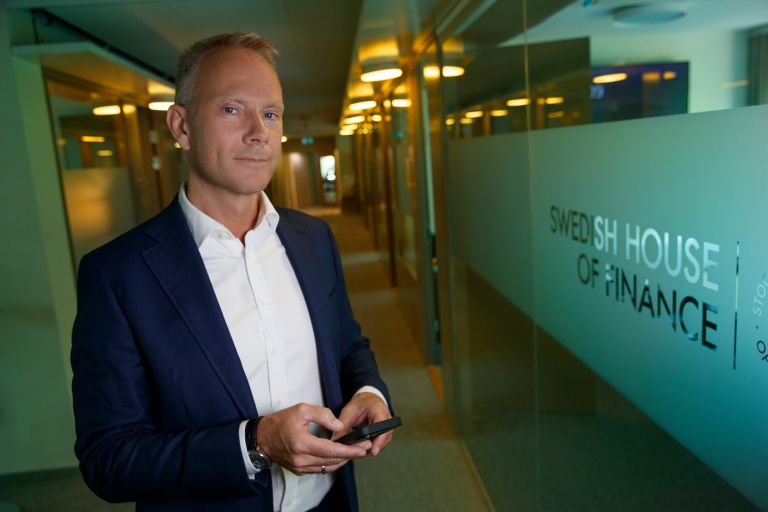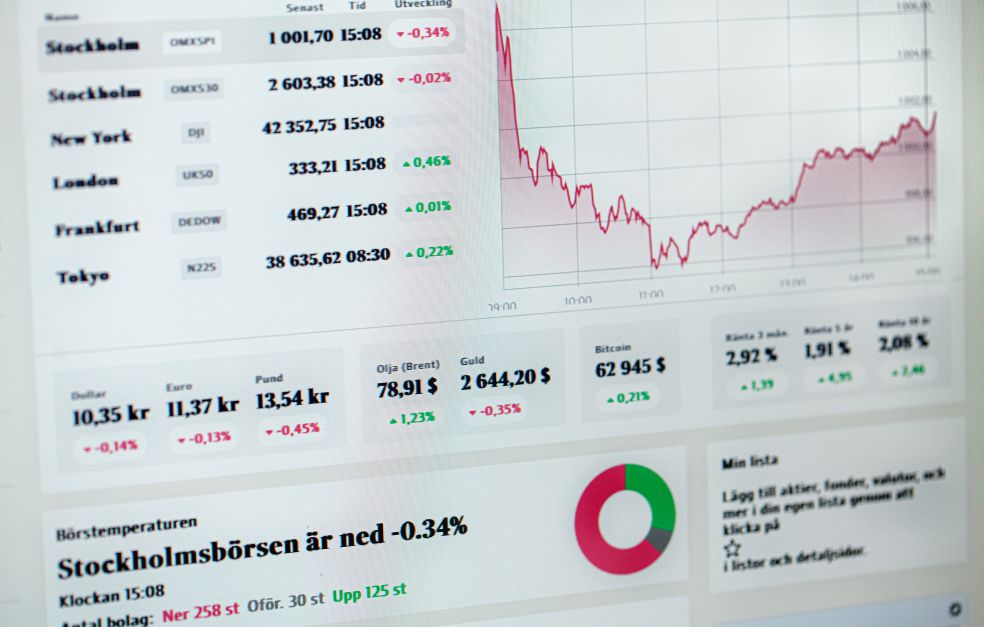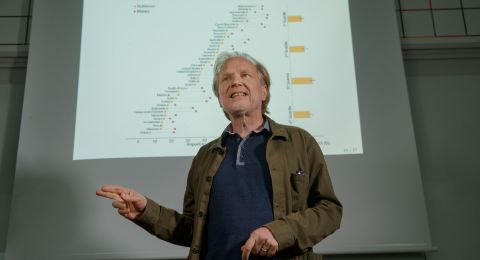Over the past few decades the number of companies listed on stock exchanges in the U.S. and Europe has declined markedly. A shrinking stock exchange has a socio-economic impact. Wallenberg Scholar Alexander Ljungqvist is studying how investors and consumers are affected.
Alexander Ljungqvist
Professor of Entrepreneurial Finance
Wallenberg Scholar
Institution:
Stockholm School of Economics
Research field:
Entrepreneurial finance, particularly the socio-economic role of the stock market
The decline in listed companies is a global trend. In the U.S. their number has nearly halved, from a peak of 7,500 in 1996. Europe has also seen a marked decline of 55 percent on the seven leading exchanges.
Ljungqvist is a professor at Stockholm School of Economics and is researching this phenomenon. The reasons are still debated, but one explanation may be the advent of new regulations.
“Some companies consider that a listing is too expensive and complicated, citing factors such as the insider and information disclosure regulations that now apply. Another explanation may be the establishment of new private markets in the form of venture capital funds and similar alternatives where companies can raise sufficient capital without floating on the stock exchange.
One issue Ljungqvist is examining is how the falling number of listed companies impacts the flow of information in the market. Investors are constantly on the hunt for quality information, and the more companies that are listed, the more information is available. Listed companies are obliged to disclose financial information, adding to market transparency and efficiency.
“When companies leave the stock exchange, or decide against an IPO (initial public offering), important information is less readily available,” explains Ljungqvist. “It’s harder for investors to value companies and make informed investment decisions. This impacts not only investors, but the functioning of the market as a whole.”
Creative destruction
Ljungqvist also discusses the term “creative destruction” and how it impacts employees and investors. Innovations often create winners as well as losers. One historical example is the safety razor, invented by King Camp Gillette in 1904. It made Gillette rich, but put many barbers out of a job.
Today we see innovations such as AI and robotics. New technology is on the march, which may cause workers in traditional manufacturing and service industries to lose their jobs.
To guard against this risk individuals could invest in innovative companies. But here a dilemma arises. Given the current trend of shrinking stock markets, there is less opportunity to use them as a form of insurance against the risks inherent in creative destruction.
“When the winners are unlisted companies it’s difficult for the average investor to participate, just as it was for the barbers who couldn’t invest in Gillette’s invention.”
Economic inequality
The prevailing trend of uneven access to investment opportunities may also result in economic inequality. Affluent individuals are able to invest in the venture capital market and unlisted companies. They receive a high return on groundbreaking innovations, unlike normal savers. The result may be increasingly uneven wealth distribution.
We hope our research will contribute to a more enlightened debate and help decision makers to make informed decisions.
“We see a trend where the richest one percent of the world population own an ever-increasing share of global wealth. Unequal access to investment opportunities may be one explanation,” says Ljungqvist.
Unique database
Ljungqvist and his colleagues are gathering extensive data in order to examine these complex issues. The information is obtained from U.S. databases, whose data are of better quality than their European counterparts. He is well acquainted with matters concerning the U.S. stock market having spent many years in the U.S., including a spell as professor at Stern School of Business at New York University, and as an adviser to the Nasdaq Listing Council.
“We have built a unique database dating back to the early 1800s – a resource-intensive and time-consuming process.”
His research team includes economists and data analysts. An interdisciplinary approach is essential, and the research lab has derived inspiration from the natural sciences , applying standardized procedures and the highest possible standards of transparency and research ethics.
“We’ve developed advanced tools to analyze large quantities of data, including textual analysis of millions of patents.”
Political measures
Ljungqvist passes no judgment on the way companies act. The goal of his research is to gain a better understanding of the role played by the stock market in the economy, and to contribute new knowledge to the debate that is already in progress.
“Decision makers have started to be concerned about shrinking stock exchanges and are considering taking action. But in my view, there they will draw hasty conclusions.”
The EU Commission’s proposed “Listing Act” is an example of a measure designed to make stock exchange listings more attractive, particularly for innovative start-ups. But some measures, such as lowering the information requirements for listed companies, may be counterproductive.
“It undermines the transparency that is one of the stock market’s greatest strengths.”
Ljungqvist considers that the stock market plays a key socio-economic role, and it is therefore vital to improve our knowledge in this field.
“We hope our research will contribute to a more enlightened debate and help decision makers to make informed decisions.”
Text Nils Johan Tjärnlund
Translation Maxwell Arding
Photo Magnus Bergström






